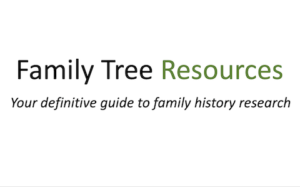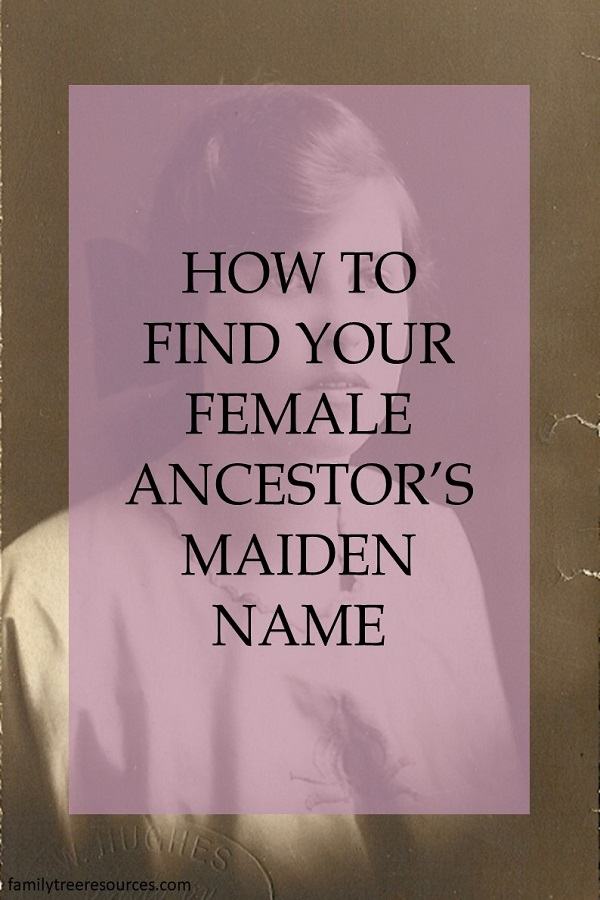
A maiden name is a surname given to a woman when she is born. Your mother’s maiden name was the surname she was given at birth, so this was the name she was known by until she married your father. Of course, in some cases, your mother may have married more than once, so you will have to conduct some research in birth and marriage records to discover any previous marriages she might have undertaken.
Today, a woman usually keeps her maiden surname until she gets married, in which case she has the option of keeping this name or becoming known by her husband’s surname.
For example, Mary Smith married John Jones and could choose to keep her maiden name in which case she would still be known as Mary Smith or she could take on her husband’s surname and become known as Mary Jones.
Another option is that the couple decide to combine their two surnames, creating a double-barrelled surname, and in this example, her surname could become Smith-Jones. If a woman divorced her husband, and had taken his name as her surname, she may revert back to her maiden name following her divorce.
In earlier centuries, women usually took on their husband’s surnames when they married. For this reason, discovering women’s maiden names is not always straightforward because they left behind their maiden names when they married.
If you are unable to trace these names, you may find your research hits a dead end.
One of the best ways of tracing a woman’s maiden name is by perusing a marriage certificate or a birth certificate of one of her children.
Showing a Woman’s Maiden Name
When you wish to write down a woman’s maiden name, and she has married, it is usually written in the form Mary Jones, née Smith, signifying that Smith is her maiden name. Of French origin, the term née is the past participle of naître to be born.
A Birth Certificate Includes Mother’s Maiden Name
A birth certificate contains the father’s and mother’s names, which usually includes the maiden name of the mother.
If the child was illegitimate, however, the father’s name was not usually mentioned, with the certificate only mentioning the mother’s name and surname. This surname was normally her maiden name.
Whether the child was legitimate or illegitimate, I have come across an occasion, however, where the mother’s maiden name stated on the birth certificate was incorrect because Elizabeth Dammant married William Barker, then going on to marry Samuel Cole.
She had children with Samuel, with the birth certificate of her daughter Harriet implying that Barker was her maiden name when this was not the case, so watch out for circumstances like this.
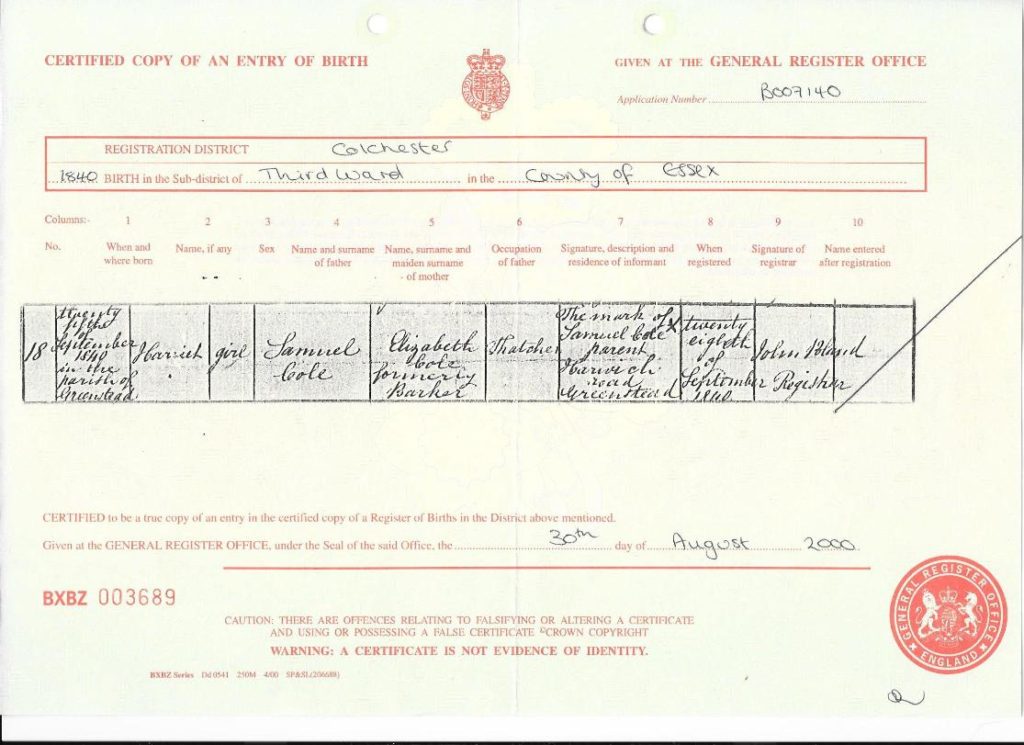
Woman’s Maiden Name Mentioned on Marriage Certificate
A marriage certificate mentions the names of both the bride and groom. The bride’s surname would normally be her maiden name but if she had been married previously, this may be her previous husband’s surname.
It is still possible to discover her maiden name, however, because her father’s surname, which is usually mentioned on the certificate, is normally her maiden name.
Women Could Regain their Maiden Name
If, after a woman has married, and the marriage did not eventually work out, and the couple divorced, the woman may regain her original maiden name after her divorce, so if you are trying to discover if she had remarried, it is prudent to check under both her previous husband’s surname and her maiden surname.
Woman’s Maiden Name Sometimes Used as a Middle Name
If you have hit a brick wall, and cannot find your grandparent or great-grandparent’s maiden name, it could be worthwhile to check the names of her descendants because some families passed down the surname of an ancestor in the name even though it may not appear to be so.
For example, although Oliver is predominantly known as a boy’s name, in the case of Joseph Oliver Adams, he was named as such because his ancestor was Elizabeth Oliver.
In Censuses, Look For Family Members Next Door
If you have found a family in a census return, it is important to also check their neighbours because sometimes you find that the daughter, when she married, did not move far from the family home.
Although you have a clue as to the woman’s maiden name, it is still worth ascertaining whether this is really the case by checking the GRO Index to see if you can find a marriage between these two people, or if before 1837, checking parish registers.
Check Other Household Members in a Census
Sometimes you may find that the mother-in-law or father-in-law is living with the family, which may give you a clue with regard to the woman’s maiden name.
You may also find that the wife’s unmarried brother or sister is living with the family, but be warned, sometimes the wife’s brother or sister is listed as being related to the head of the house.
Search Using Only a First Name
If you have a clue as to the date of birth or place of birth of your ancestor from a census return, it is possible to search on a site such as FreeBMD, Ancestry or Findmypast using only a first name.
For example, I knew from the 1881 Census that my ancestor Isaac Dunkley had married a lady called Jane, and had had children between 1867 and 1876 and that they were living in Roade, Northamptonshire.
Using this information I could ascertain that they had probably married between 1860 and 1867, so knew to concentrate my search for their marriage between these two dates. I then inputted this search into FreeBMD.
This research showed that there was only one record during this time period, which was Isaac Dunkley marrying Jane Jannett in the Apr-Jun quarter of 1864. Going back to Ancestry, and adding Jane’s maiden name to the search brought up one record – that of Isaac Dunkley marrying Jane Jannett on 26 September 1864 in Courteenhall, Northamptonshire, which is close to Roade.
Wanting to add further proof that Jane Jannett was indeed my ancestor, I then, using the GRO Index (the national index of births, marriages and deaths), searched for my grandfather Herbert Dunkley, finding that the entry in the January-March quarter of 1867 proved his mother’s maiden name was Jannett. I had finally tracked down my ancestor’s maiden name.
This method worked well for me because my ancestor had a relatively uncommon name, but it may be more difficult to utilise this method if your male ancestor’s name was John Smith. It is incredibly important to ensure that you have found the right person before adding them to your tree.
Check Family Bibles For Mother’s Maiden Name
Sometimes family bibles can include information that can help you to determine the mother’s maiden name.
For example, my family has a family bible that was given to Mary Florence Adams on her 21st birthday.
In that bible, she noted down her marriage date in the front and the birth dates and names of her children in the back (including their surname), which helped us to determine that it was my great-grandmother’s bible.
Further research determined that Mary Florence Adams had married Henry Thomas Richardson on 16 December 1893 (Mary had altered the marriage date by a year because she was pregnant when she married).
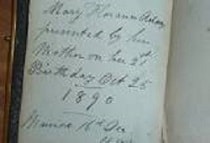
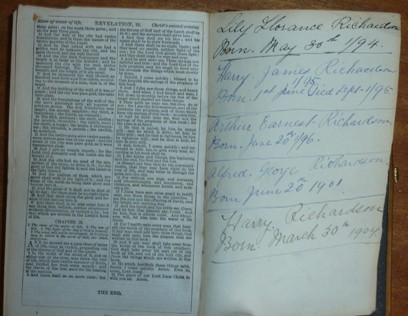
Military Records Can Help You Find a Woman’s Maiden Name
Some military records sometimes mention the maiden name of the woman if her husband had died in the war. If he was entitled to a pension, this record usually mentions the maiden name of the wife and their marriage date.
The pension record may also list any children that were born to the marriage, which could include children you were unaware of.
Newspaper Announcements Can Help You Find A Woman’s Maiden Name
Your ancestor’s marriage may have been mentioned in the newspaper, with this usually listing the name of the bride and groom, and their usual places of residence.
If your ancestor has died, the deceased’s parent’s names can sometimes be mentioned.
Married Daughter May Be Buried With Her Parents
Memorial Inscriptions can also help you to track down the mother’s maiden name because sometimes a married daughter is buried with her parents, and this is mentioned on the gravestone, thus giving you her maiden name, which can help you to find the correct marriage entry in the register.
This is especially helpful if you are searching for an ancestor in earlier centuries.
A memorial inscription in St Peter and St Paul, Nether Heyford, Northamptonshire, stated ‘near this place lyeth the body of Mr George Goldbourn of Upper Heyford who took to wife Sarah the Daughter of Mr Edward Pickering of Bugbrooke (a neighbouring village) and departed this life in the 51st year of his age on 31 December 1688’.
Using Wills to Find a Woman’s Maiden Name
Wills can sometimes help you to track down a woman’s maiden name. Many testators bequeathed their worldly goods in their wills, and usually gave these goods to their sons and daughters along the lines of ‘I give and bequeath unto my daughter Jane, wife of William Smith…’
How to Trace a Woman’s Maiden Name Prior to 1837
If you are tracing a woman’s maiden name prior to 1837, it can be more difficult to trace her name. You have to rely on parish registers prior to when civil registration began on 1st July 1837.
Some parish registers give more detail than others, with some vicars adding the maiden surname of a woman to a baptism record, such as the vicar of Kirton, Suffolk in the late eighteenth century.
Some vicars went a stage further, with William Dade, a Yorkshire clergyman in the eighteenth century, believing that as much information as possible should be included in the register. These registers give much more detail, which includes:
- Child’s Name
- Seniority of the Child: whether first born etc
- Father’s Name
- Profession of the Father
- Place of Abode
- Names, professions and abodes of father’s parents
- Mother’s Name
- Mother’s Profession if she had one
- Names, professions and abodes of mother’s parents
- Child’s date of birth and baptism
If the family had not moved from their original village before having children, you may find that there is a record of a marriage a few years (or months!!) before the baptism date of their first child.
Although you may have found the marriage record, it may still be prudent to note down the names of the witnesses to the marriage because this may help you to track down other relatives you did not know existed.
